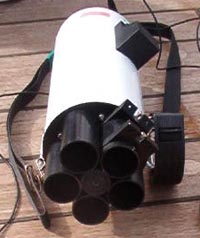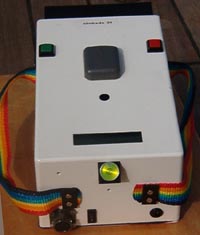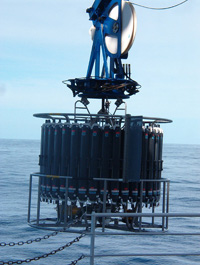


| About the Bio-optical Program |
The goal for the Bio-optical Program on BEAGLE 2003 is to collect water samples for bio-optical measurements and carry out various sampling procedures. The measurements collected during the cruise would provide an invaluable database of high quality data for the Southern Hemisphere, since this part of the world's oceans are greatly under sampled and there is a paucity of this type of data from the region. A number of institutes (CSIRO Australia, BIO Canada, University of Concepcion, INIDEP and Scripps Institution of Oceanography) are collaborating in the bio-optical program. One bio-optical specialist was appointed for each leg of the cruise (see below).
The following procedures are planned for each sampling station (ideally twice per day).
Light Measurements
- Continuous Recording of incoming Photosynthetically-Active Radiation (PAR) on deck, using a PAR sensor and a Licor Li 1400 data logger.
- On-deck measurement of spectral reflectance at all day-time stations using a hyperspectral Ocean Optics hand-held radiometer.
- SIMBAD radiometer measurements at local noon, and at all other sampling stations (spectral bands centered at 443, 490, 560, 670 and 870 nm).
- Water-leaving radiance and aerosol optical thickness in 11 spectral bands (centered at 350, 380, 412, 443, 490, 510, 565, 620, 670, 750, and 870 nm) measured with a SIMBADA radiometer at local noon, and at all other sampling stations.
Phytoplankton Pigments
- Chlorophyll-a (Turner Fluorometer) - samples collected from surface and various depths (CTD samples). Processed on board.
- HPLC pigments (duplicate set) - samples collected twice per day from the surface, filtered onto GF/F filters and frozen in liquid nitrogen for later processing back in the lab. One set to be analysed by Dr. Lesley Clementson (CSIRO Marine Research Laboratory, Hobart, Australia), the other by Dr. Ray Barlow (MCM, Cape Town, South Africa).
Phytoplankton Absorption
- Duplicate water samples collected twice per day from the surface (CTD), and filtered onto GF/F filters. One set of filters to be analysed on board the ship using a CARY BIO 50 UV/VIS spectrophotometer (350-750 nm). The other set frozen at -80oC to be analysed at the Bedford Institute of Oceanography, Canada, using a Shimadzu UV 2102 spectrophotometer equipped with an integrating sphere.
CDOM Absorption
- Surface water samples collected twice per day. All samples processed on board using a CARY BIO 50 UV/VIS spectrophotometer: absorption measured from 250-750 nm, 50mm pathlength.
Flow Cytometry
- Duplicate surface samples collected twice per day, preserved in paraformaldehyde (PFA) and frozen at -80oC for later analysis back in the laboratory (Dr. Bill Li, Bedford Institute of Oceanography, Canada).
Photosynthesis-Irradiance experiments
- Two experiments to be carried out each day using Carbon 13. Data to be used for improving large-scale estimates of primary production from southern-hemisphere regions, using satellite data on ocean-colour.